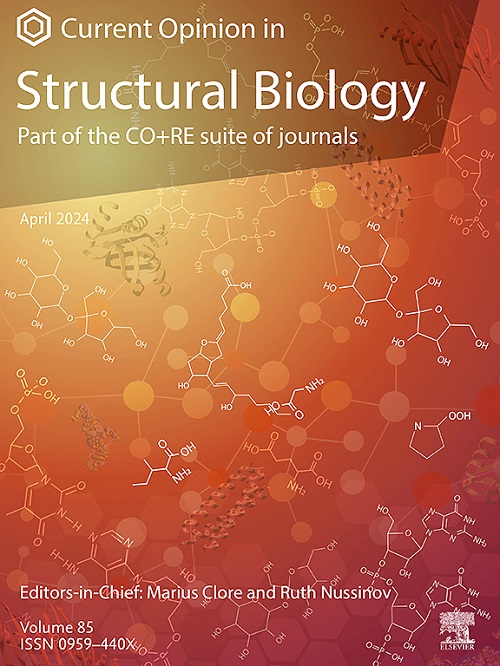解码形成亚兆级基因组组织的机制
IF 6.1
2区 生物学
Q1 BIOCHEMISTRY & MOLECULAR BIOLOGY
引用次数: 0
摘要
在千碱基到兆碱基的尺度上理解基因组组织是至关重要的,因为它包含了基因和调控元件。实验技术分辨率的提高揭示了这种尺度下的新型结构基序,包括微室、核小体离合器、微结构域和包装结构域。在这里,我们回顾了最近发展理论来解释这些观察结果的进展。主要进展包括阐明核小体定位和表观遗传修饰的作用,局部结构中区隔化的作用和机制,环挤压和相分离之间的相互作用。这项工作揭示了观察到的结构出现的可能机制,但尚不清楚这些因素如何在细胞中共同作用。为此,最近的研究将染色质构象捕获数据与不同的基因组学数据集相结合,以创建核小体分辨率及以下的天然样染色质模型。尽管仍然存在一些障碍,但这种策略有望解码分子力如何积聚以形成染色质结构并最终调节转录。本文章由计算机程序翻译,如有差异,请以英文原文为准。
Toward decoding the mechanisms that shape sub-megabase-scale genome organization
Understanding genome organization at the kilobase to megabase scale is critical, as it encompasses genes and regulatory elements. Improvements in the resolution of experimental techniques have revealed novel structural motifs at this scale, including micro-compartments, nucleosome clutches, microdomains, and packing domains. Here we review recent progress on developing theories to explain these observations. Key advances include elucidating the role of nucleosome positioning and epigenetic modifications, the role and mechanisms of compartmentalization in local structure, and the interplay between loop extrusion and phase separation. This work has revealed probable mechanisms by which the observed structures emerge, but it remains unclear how these factors act together in the cell. To this end, recent studies have used chromatin conformation capture data in concert with diverse genomics datasets to create native-like models of chromatin at nucleosome resolution and below. While several roadblocks remain, this strategy promises to decode how molecular forces sum to shape chromatin structure and ultimately regulate transcription.
求助全文
通过发布文献求助,成功后即可免费获取论文全文。
去求助
来源期刊

Current opinion in structural biology
生物-生化与分子生物学
CiteScore
12.20
自引率
2.90%
发文量
179
审稿时长
6-12 weeks
期刊介绍:
Current Opinion in Structural Biology (COSB) aims to stimulate scientifically grounded, interdisciplinary, multi-scale debate and exchange of ideas. It contains polished, concise and timely reviews and opinions, with particular emphasis on those articles published in the past two years. In addition to describing recent trends, the authors are encouraged to give their subjective opinion of the topics discussed.
In COSB, we help the reader by providing in a systematic manner:
1. The views of experts on current advances in their field in a clear and readable form.
2. Evaluations of the most interesting papers, annotated by experts, from the great wealth of original publications.
[...]
The subject of Structural Biology is divided into twelve themed sections, each of which is reviewed once a year. Each issue contains two sections, and the amount of space devoted to each section is related to its importance.
-Folding and Binding-
Nucleic acids and their protein complexes-
Macromolecular Machines-
Theory and Simulation-
Sequences and Topology-
New constructs and expression of proteins-
Membranes-
Engineering and Design-
Carbohydrate-protein interactions and glycosylation-
Biophysical and molecular biological methods-
Multi-protein assemblies in signalling-
Catalysis and Regulation
 求助内容:
求助内容: 应助结果提醒方式:
应助结果提醒方式:


